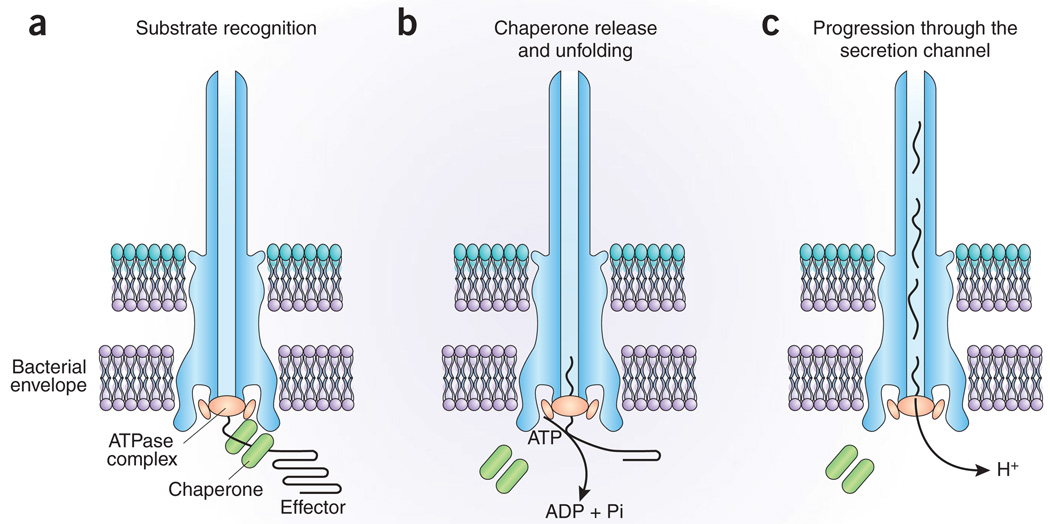Figure 1.
Model for the energizing of type III secretion machines. (a) Proteins to be secreted (known as ‘effectors’), which are bound to a customized chaperone, are recognized by components of the secretion machinery, including a machine-associated ATPase. (b) The ATPase ‘strips’ the chaperone from the complex, which remains within the bacterial cell, and mediates the unfolding of the effector protein and its initiation into the secretion pathway. ATP hydrolysis energizes this step. (c) Aided by the proton motive force, proteins then travel through the central channel of the machine to reach their final destination. See text for details.

